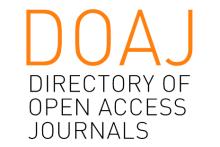Resource information
Demographic change suggests substantial effects on future societal demands on agricultural landscape use and thus on rural areas. Demographic change is thereby defined as both the decrease of the population and the shift in the age distribution („aging“) and in the spatial distribution („rural flight“ particularly of young people). The exploration of the research object is based on the starting hypothesis that the demands and preferences of an aging and urbanizing population are changing and have effects on the controlling state interventions, which are also reflected in the agricultural use of landscapes. After a short description of demographic change, a conceptual politico-economic model, which describes the transmission of demographic change on land use, through the analysis of group (age groups, groups of residences) demands on agrarian landscape use is presented. The focus is on the demand for land use related non-commodity outputs (NCO). The starting hypothesis is then examined using selected studies. The literature suggests that urban-rural dichotomy is likely to be greatly diminished. In addition, the urbanization of preferences is expected while preferences differentiated against heterogeneous cultural lifestyles seem to become even more important. However, without further research on the related topics, the basic issues cannot be clearly dealt with. Assumptions are finally made regarding changing societal demands for agrarian landscapes due to demographic change. The limitations of the selected approach and the identification of further research needs will be discussed in closing.



